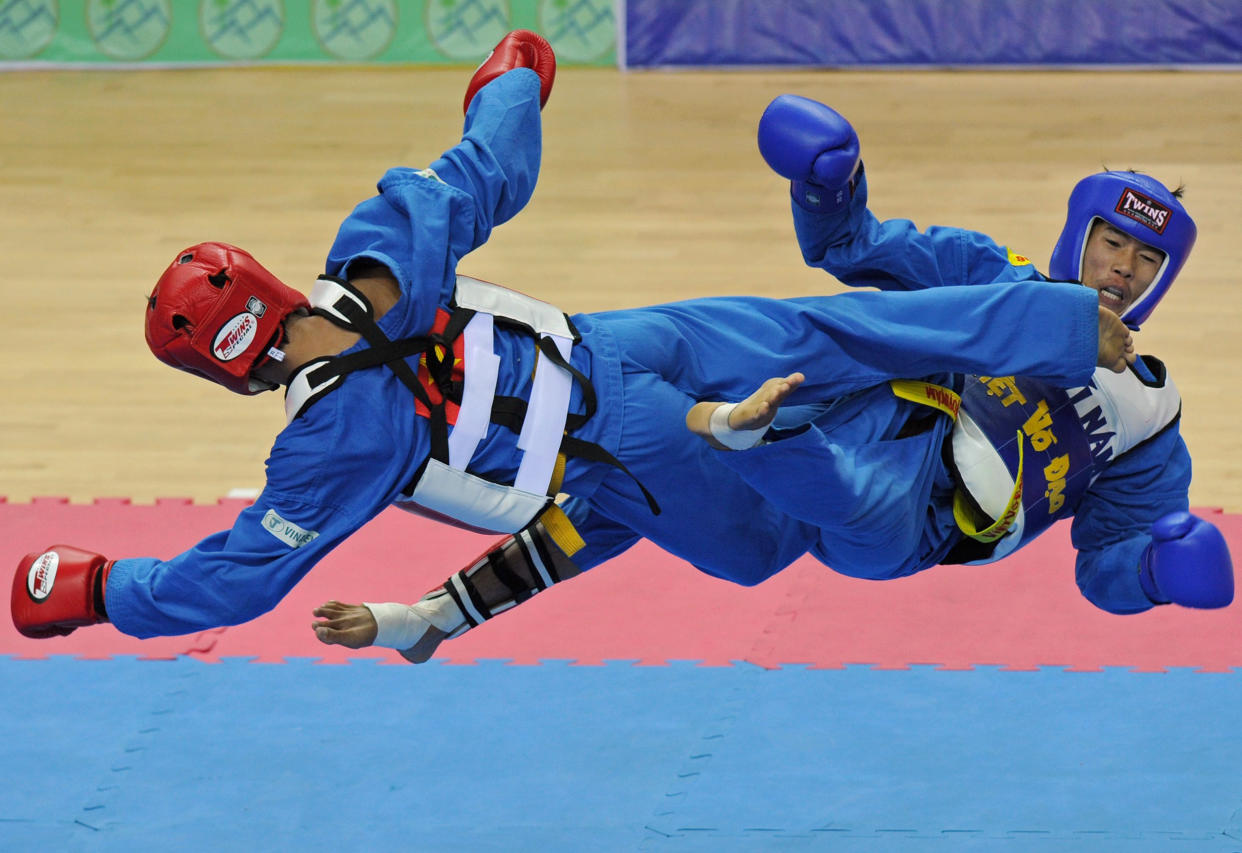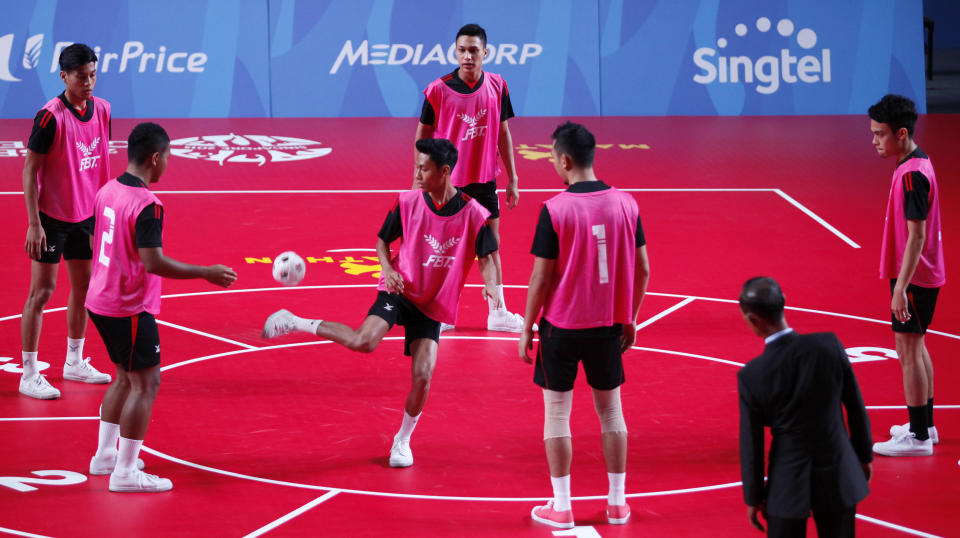SEA Games: Here are the obscure sports that made it to the Games
From arnis to vovinam, debate rages on as to whether these sports lend a regional flavour or are merely pointless distractions

SINGAPORE — Arnis, vovinam, kenpo: Do these obscure sports add a regional flavour to the SEA Games? Or are they pointless distractions that serve only as boosts of the host nations in the medal tally table?
It is a debate that has dogged the biennial Games ever since it decided to include non-Olympic sports into its sporting programme since the 1970s. The first non-Olympic sport to be included was bowling in 1975, as the sport was widely played around the Southeast Asia region.
Over the decades, more sports were introduced – and they became more and more idiosyncratic to the region, or even the host country alone.
This has led to accusations that these sports are merely put into the Games programme by the host nations so that they can earn easy golds to pad up their medal tally and rise up the table.
Here are some of the more obscure or debatable sports that have made the SEA Games sports programme over its 31 editions:
Arnis (1995, 2005, 2019, 2023)
This is the national martial art of the Philippines, so naturally it has been included into the SEA Games programme whenever the country hosts the Games in 1995, 2005 and 2019. This combat sport emphasises weapon-based fighting with sticks, knives and bladed weapons, as well as "open hand" or techniques without weapons.
Arnis competitions uses foam-padded sticks with thin rattan cores, and are meant to break before serious injury occurs.
Beach handball (2019, 2021)
The game is similar to the Olympic sport of handball, but is played on sand instead of in a sports hall. Since the ball loses most of its bounce on sand, there is little to no dribbling.
Also, creative or spectacular goals, such as 360 degree jumps and alley-oops, are awarded with two points instead of one.
Chess (2003, 2005, 2011, 2013, 2019, 2021, 2023)
While this strategic board game is enjoyed by millions worldwide, the debate remains whether it qualifies as a competitive sport. Chess proponents argue that mental exertion during chess competitions manifests itself physically, as players will feel drained and exhausted. Detractors, however, counter by saying that chess does not make the player physically stronger, and thus cannot be considered a sport.
Whatever the argument, chess is a highly-competitive event among nations such as Vietnam, Thailand, Indonesia and Myanmar, and features blitz, rapid and standard competitions. The Chinese version, xiangqi, will also be competed at the upcoming Cambodia SEA Games, as will Ouk Chaktrang, the Cambodian version of chess.

Chinlone (2015, 2017)
The national sport of Myanmar, Chinlone is usually played non-competitively by individuals passing a rattan ball among one another, without using their hands, and try to keep the ball from hitting the ground.
It was first included as a SEA Games exhibition sport in 2013, when Myanmar hosted the event for the first time in 44 years, and was combined with the similar sepak takraw competitions in 2015 and 2017.
Contract bridge (2011)
Like chess, contract bridge is a popular, mentally-stimulating card game that is nonetheless recognised by the International Olympic Committee as a sport. While it does have an element of randomness, tournaments try to minimise this by comparing results of multiple team pairs in identical situations.
Contract bridge appeared only once in the SEA Games in 2011, but has since made it to the Asian Games programme in 2018 as well.
Dancesport (2005-2009, 2019, 2021, 2023)
In contrast to social or exhibition dancing, dancesport competitors are required to sustain a high intensity throughout their performances. And here’s the biggest challenge: the music is kept confidential until the event, and competitors have to adapt their dance routines and skills to the chosen music.
Standard competitions are contested in waltz, tango, Viennese waltz, slow foxtrot and the quickstep. This SEA Games will also include contests for samba, cha cha cha, rumba, pasodoble and the jive.

E-sports (2019, 2021, 2023)
Another highly-debatable sport, considering that it is essentially a video-gaming competition. The most common genres associated with e-sports are multiplayer online battle arena, first-person shooter, fighting, digital collectible card games, battle royale games, and real-time strategy.
The event made its debut at the 2019 SEA Games, with six competitions – DOTA 2, Tekken 7, Starcraft II, Mobile Legends: Bang Bang, Arena of Valor and Hearthstone.
Fin swimming (2003, 2009, 2011, 2021, 2023)
Fin swimming is an underwater sport involving swimming with the use of fins. The sport held its first world championships in 1976 and made regular appearances at the World Games since 1981.
The first time the sport appeared at the SEA Games was in the 2003 Vietnam edition, so it is not surprising that it will make its fifth appearance at the upcoming Cambodia SEA Games.
Jet ski (2023)
Water motor racing, anyone? The sport will make its debut at the upcoming SEA Games, but has already been featured at the 2018 Asian Games, where Cambodia won one of the two golds at stake then.
This sport first appeared in Europe in 1950, and has two main race categories: runabout (sitting competition) and stand-up (standing competition). Races can be closed loop, offshore speed racing, endurance racing or freestyle.
Jiu-jitsu (2019, 2021, 2023)
This ancient Japanese martial art – together with its Brazilian offshoot – became popular this decade due to its frequent use in mixed martial arts fights.
Emphasising on efficiently neutralising an opponent in close combat with pins, locks and throws, the sport made its long-awaited debut at the 2019 SEA Games, and will be on the 2023 Cambodia Games programme.
Kenpo (2011, 2013)
Another martial art that originated from Japan, this combat sport emphasises on striking techniques using hands and feet.
It appeared at the 2011 and 2013 SEA Games, but has not been included since.
Kun bokator/Kun Khmer (2023)
Two martial arts which originated from Cambodia will make their first appearance at the upcoming SEA Games.
Kun bokator is an ancient battlefield martial art characterised by hand to hand combat along with heavy use of weapons, while Kun Khmer is a combat sport that consists of stand up striking and clinch fighting.
Kurash (2019, 2021)
Kurash is a form of wrestling practised commonly in Central Asian countries such as Turkey, Armenia and Uzbekistan. Athletes use towels to hold their opponents, and their goal is to throw their opponents off the feet.
The sport made its Asian Games debut in 2018, and was featured in the SEA Games for the first time in 2019.
Muay thai (2005-2009, 2013, 2019), Kickboxing (2019, 2021, 2023)
This combat sport is massively popular in this region, and is characterised by the combined use of fists, elbows, knees, and shins in striking and clinching. Thailand is the main proponent of this sport, and produces a steady stream of top fighters ever since competition rules were codified in the 1920s.
Muay thai has since been incorporated with other traditional martial arts to form kickboxing, a sport which made its SEA Games debut in 2019.
Obstacle racing (2019, 2023)
Derived from commonplace military trainings, this sport involves participants racing on foot and overcoming various physical challenges such as walls, barbed wire and water bodies.
Despite being a severe examination of one’s endurance, strength, speed and dexterity, obstacle racing has gained popularity in Southeast Asia in recent years through events such as the Tough Mudder and Spartan Race.

Paragliding (2011)
Usually a recreative sport, paragliding was featured as a competitive in the 2011 SEA Games in Jakarta.
Participants compete in events such as accuracy (landing most accurately on a target pad), open distance (gliding the furthest distance) and race to goal (gliding the fastest to a finishing point).
Sambo (2019)
Originated in the early 1920s by the Soviet Army to improve hand-to-hand combat abilities of the servicemen, the sport grew in popularity to be accepted as the third style of international wrestling, after Greco-Roman wrestling and freestyle wrestling.
A sambo athlete can win a match outright by making a perfect throw from a standing position so that his opponent lands on his back, or by securing a submission hold which forces the opponent to give up.
Shuttlecock (2007, 2009)
Developed from a traditional Asian children’s game whereby a feathered shuttlecock is kicked around in a circle, competitive shuttlecock is similar to sepak takraw in which teams try to score points via kicking across the net.
Vovinam (2011, 2013, 2021, 2023)
The largest and most developed Vietnamese martial art, vovinam is practised with and without weapons, and uses the force and reaction of the opponent.
Besides hand, elbow and kicking techniques, the martial art also has several unique techniques, such as scissors kicks to twist and grapple opponents to the ground.
Stay in the know on-the-go: Join Yahoo Singapore's Telegram channel at http://t.me/YahooSingapore



